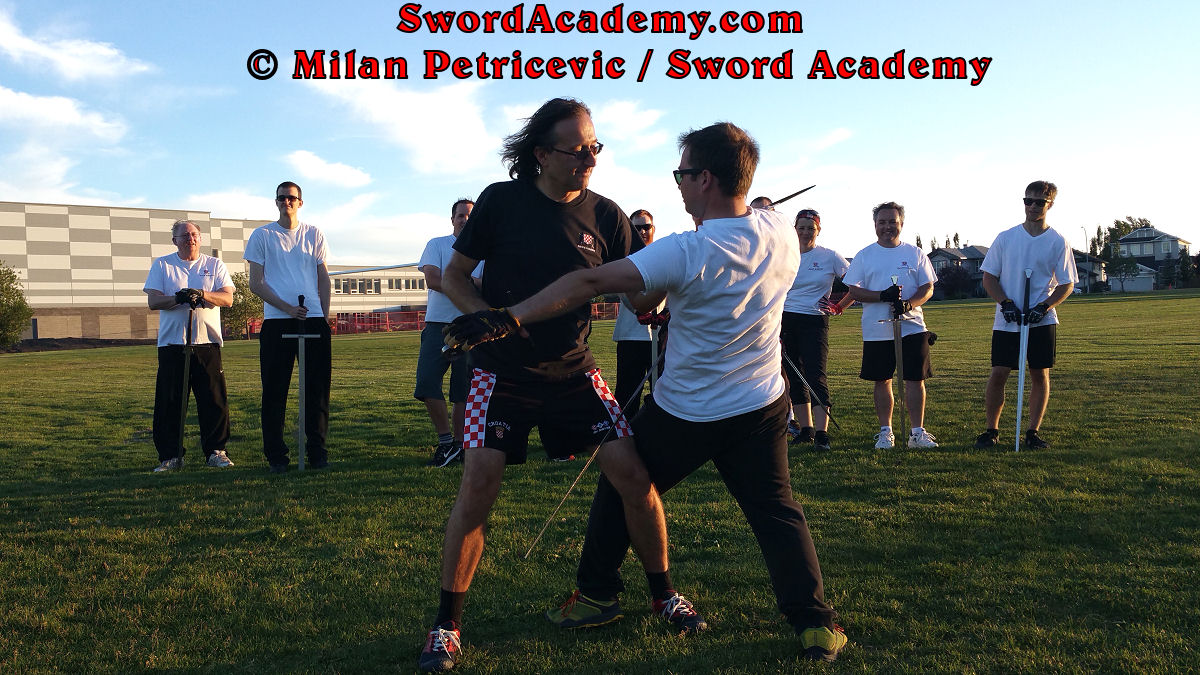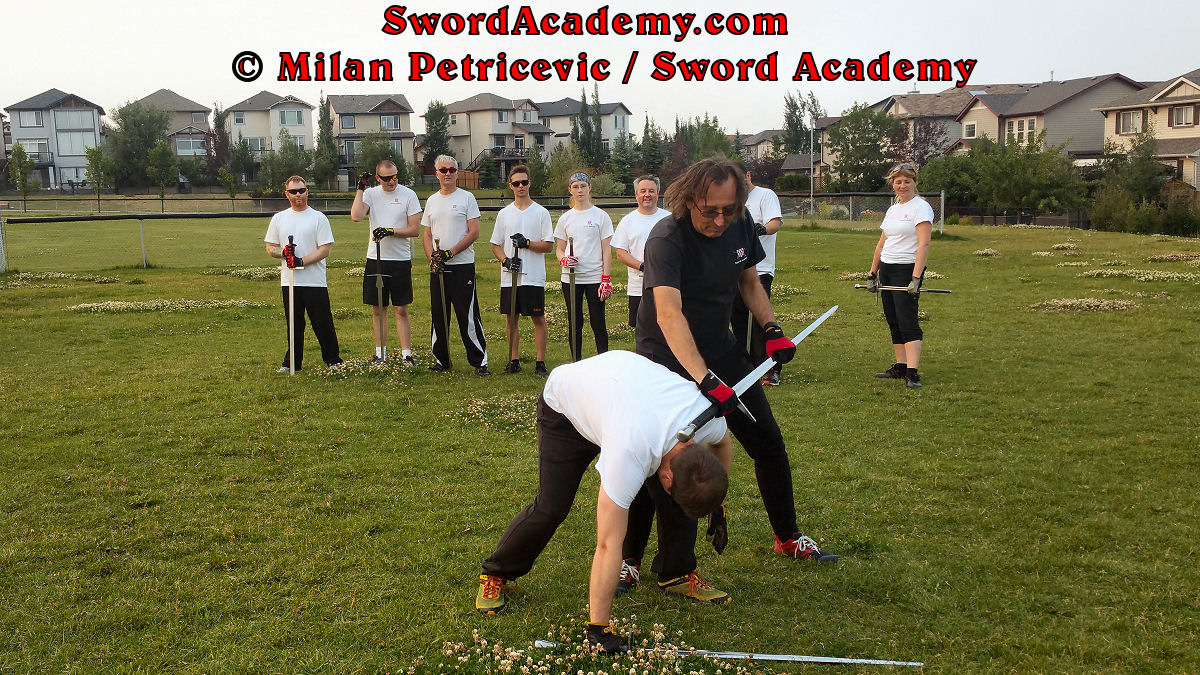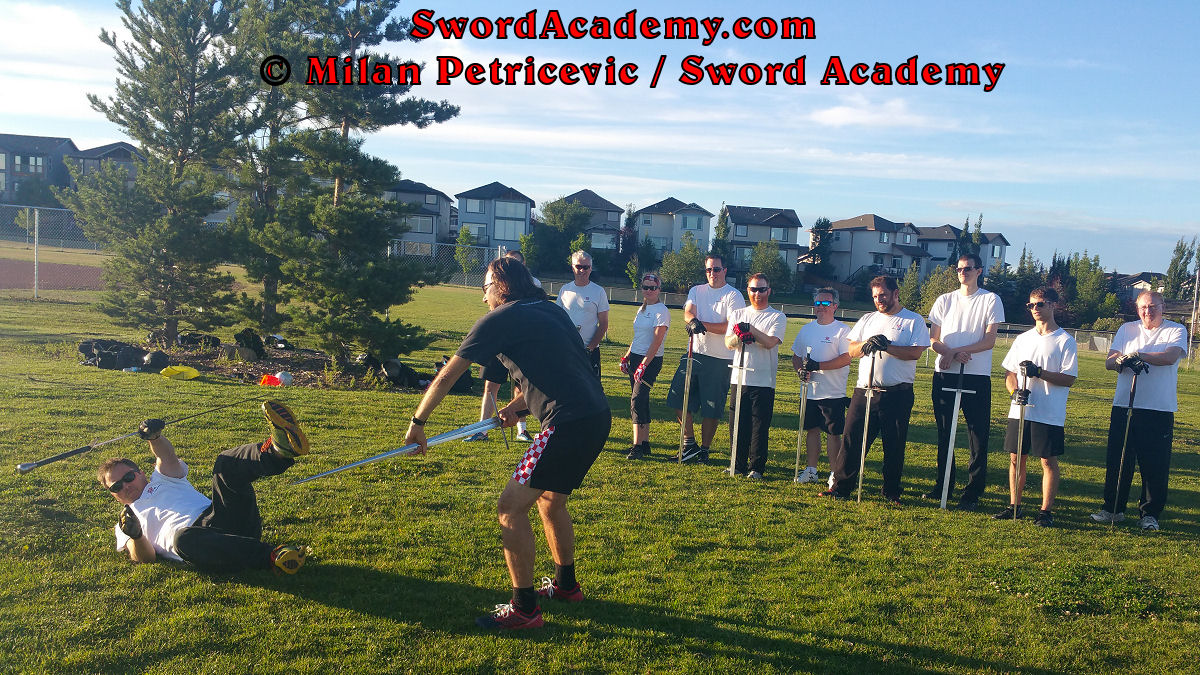Armored Sword

Armored Sword Usage and History
The long sword for armored fighting is a weapon used during the middle and late medieval period, and early renaissance period – and should be distinguished from the standard sword, which is primarily used with one hand only. It is both an offensive and defensive weapon and can be used for cuts and thrusts as well as parries and deflections. Cuts with a long sword are delivered as powerful chopping blows or as slices. Long sword is capable of delivering deadly thrusts with its point.
Although it is primarily used with two hands, a long sword is still capable of being wielded with a single hand, allowing the off-hand to be used for grappling, punching, and grabbing an opponent or his sword.
Advances in armor technology toward the end of the medieval period, specifically plate armor, decreased the protective need for a shield and thus freed up the off-hand.
Special techniques called shortened sword (or half-sword) were developed to facilitate combat against the opponent wearing plate armor.
Use of shortened sword involves holding the blade of the sword in the second hand, which enables greater point control and increased thrusting power. This in turn enables the long sword to puncture heavy armor and stab into the vulnerable joints and gaps between plates.
Thus, shortened sword is used against the opponent wearing plate armor, most often while wearing the plate armor yourself as well.
Surviving historical records also indicate limited adoption and use of some of these techniques against the opponent who is not wearing armor.
When studying shortened sword techniques at Sword Academy we do not use armor due to its high cost as it must be custom made for the wearer to be worn comfortably.
Armored Sword Components and Construction
A long sword consists of a blade, a cross-guard, a handle and a pommel. The blade comes in two basic styles, a straight cutting blade and a tapered thrusting blade with enhanced medial ridge, though both styles can cut and thrust. The cross-guard is generally straight, but it can be curved and its ends may be rounded, spiked or ornate. During the renaissance period elaborate cross-guards incorporating rings for additional protection of the hand or finger have become popular. A long sword handle has enough space for two-handed use; it can be waisted (narrower towards pommel) and has a typically oval cross- section though polygonal handles are also used. The pommel is a counter weight to the blade and comes in many shapes and sizes. Because of this, it can be a formidable weapon in its own right when used to strike hammer-like blows.
Training Tools
At Sword Academy we use exclusively steel weapons for practice and sparring.
Wooden long swords (known as wasters) are known from historical sources, and were used in the Middle Ages for training or even combat. This tradition is a continuation of use of wooden training weapons in European civilization from ancient Greeks, Romans, Franks, Vikings and others.
Some practitioners today use aluminum, synthetic or padded swords.
Due to our philosophy (and its application to training) Sword Academy uses steel weapons exclusively in our Western Martial Arts (WMA) / Historical European Martial Arts (HEMA) curriculum as they have many benefits over wooden, synthetic or other materials.
In our curriculum, Sword Academy studies medieval techniques of armored long sword combat inspired by German, Italian, and other sources.




